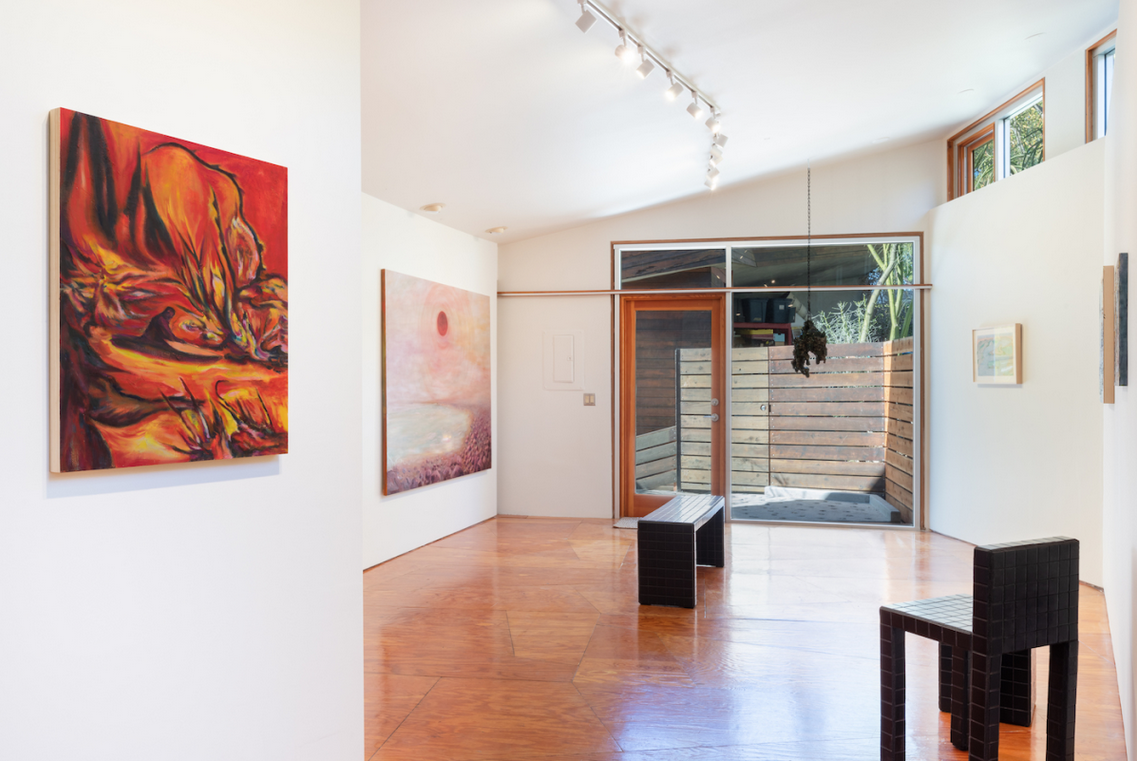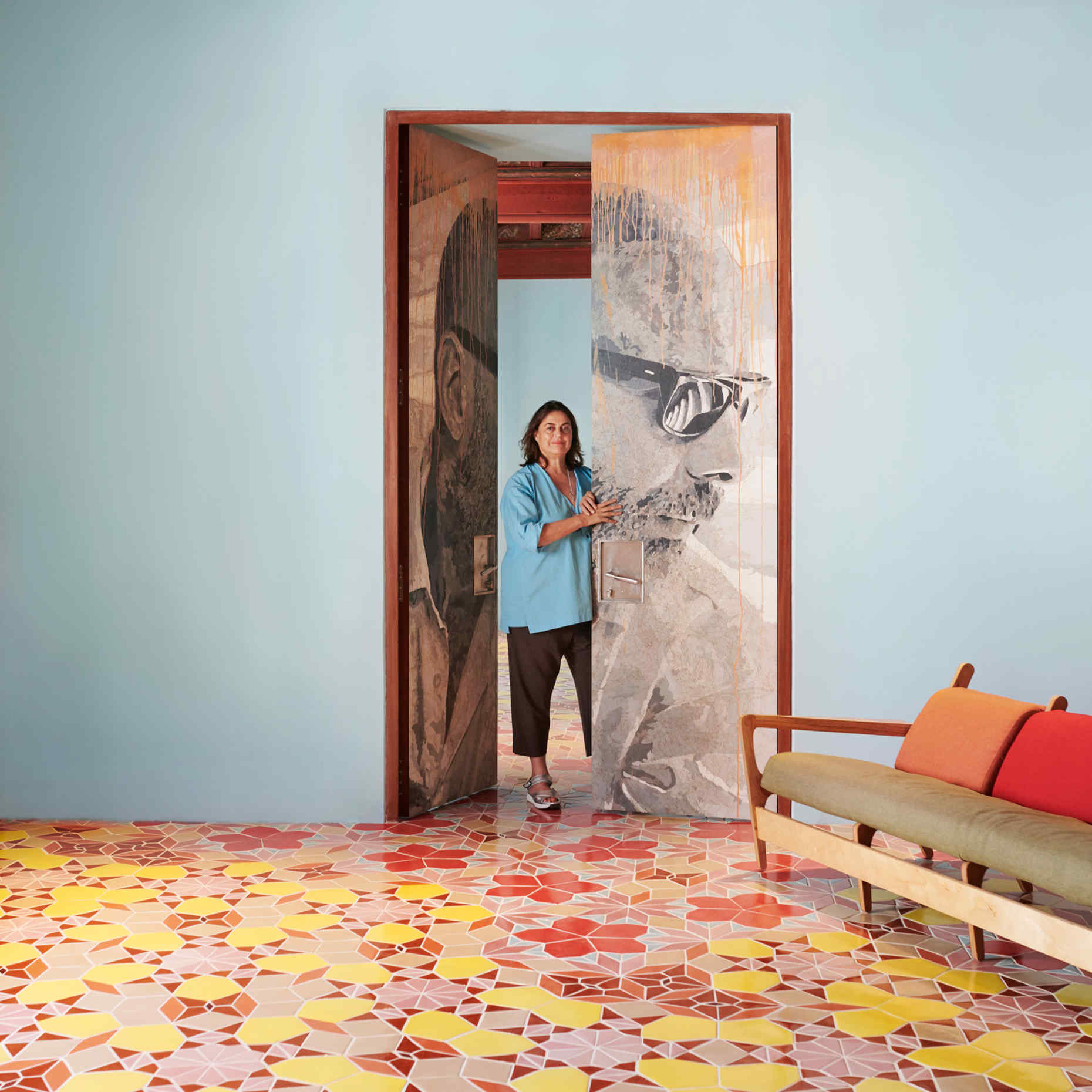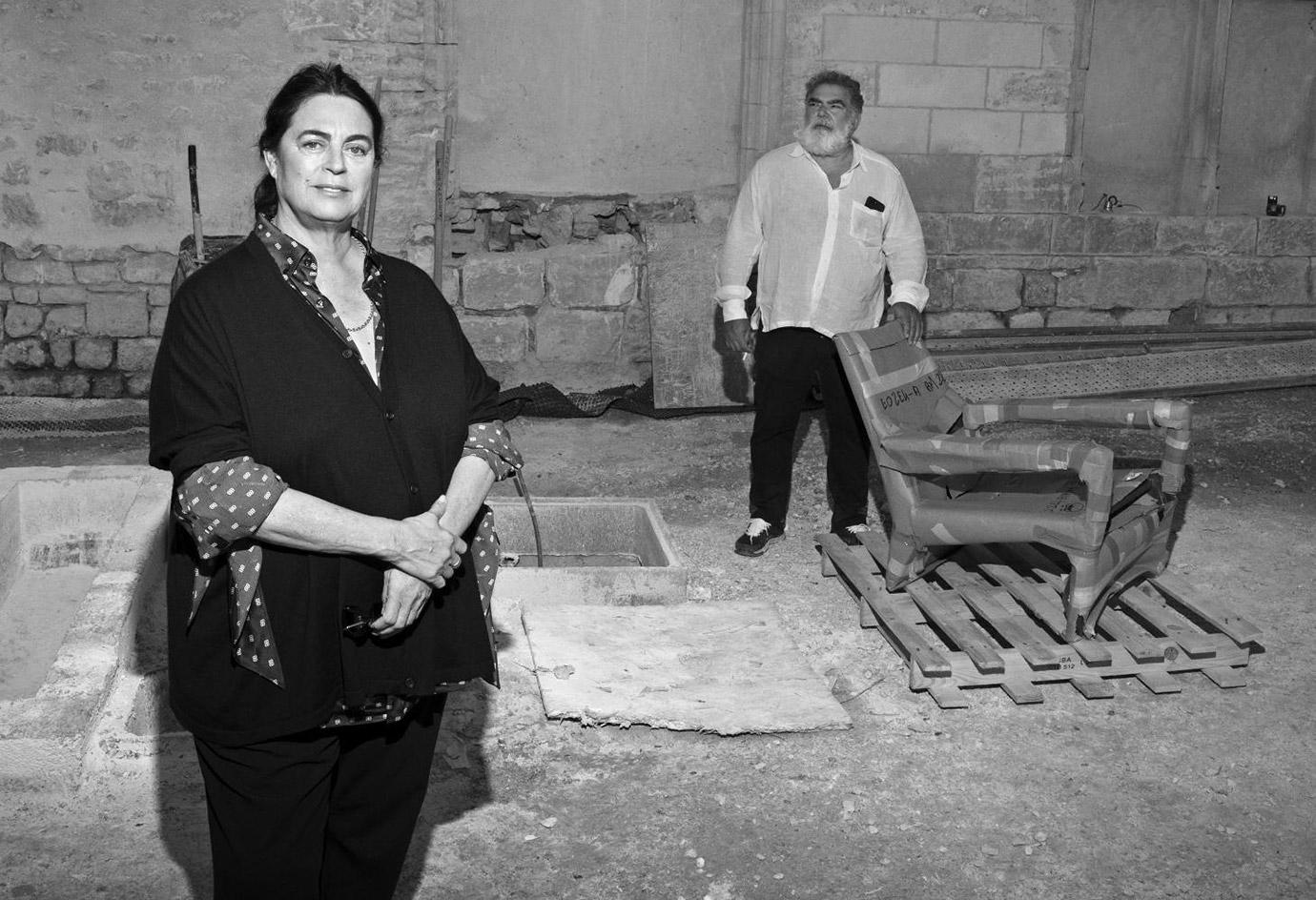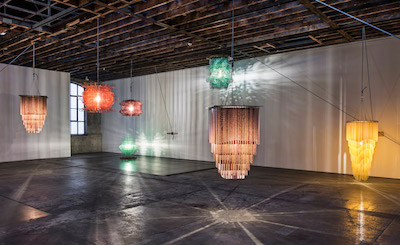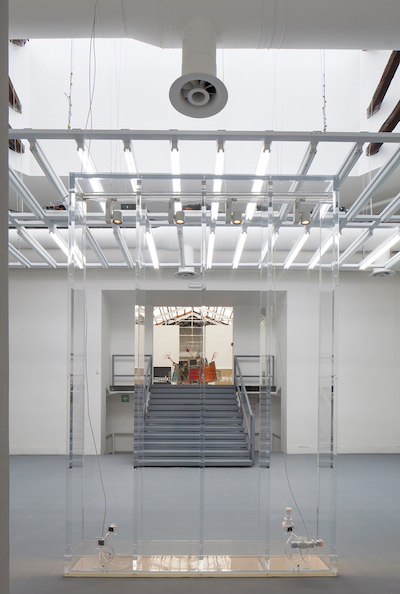Jorge Pardo | Savannah College of Art and Design
Jorge Pardo, "Untitled," 2022, set of five lamps: glass and hardware, dimensions variable. Courtesy of the artist and Petzel, New York.
Alive with color and form, hand-blown glass pendant lamps are suspended from the museum ceiling and scattered in a glowing spectrum that spans more than 100 feet. Responding to the unique length of the gallery, Pardo also situates a new large-scale textile within the space. Collaging a singular image from previous paintings, the artist remixes his work into a monumental digital print presented on a massive table assembled from wood panels that have been intricately carved in abstract patterns based on mangrove roots. Through the careful placement of these elements in the gallery, Pardo questions inherent notions and emphasizes the relationship between art and life.


